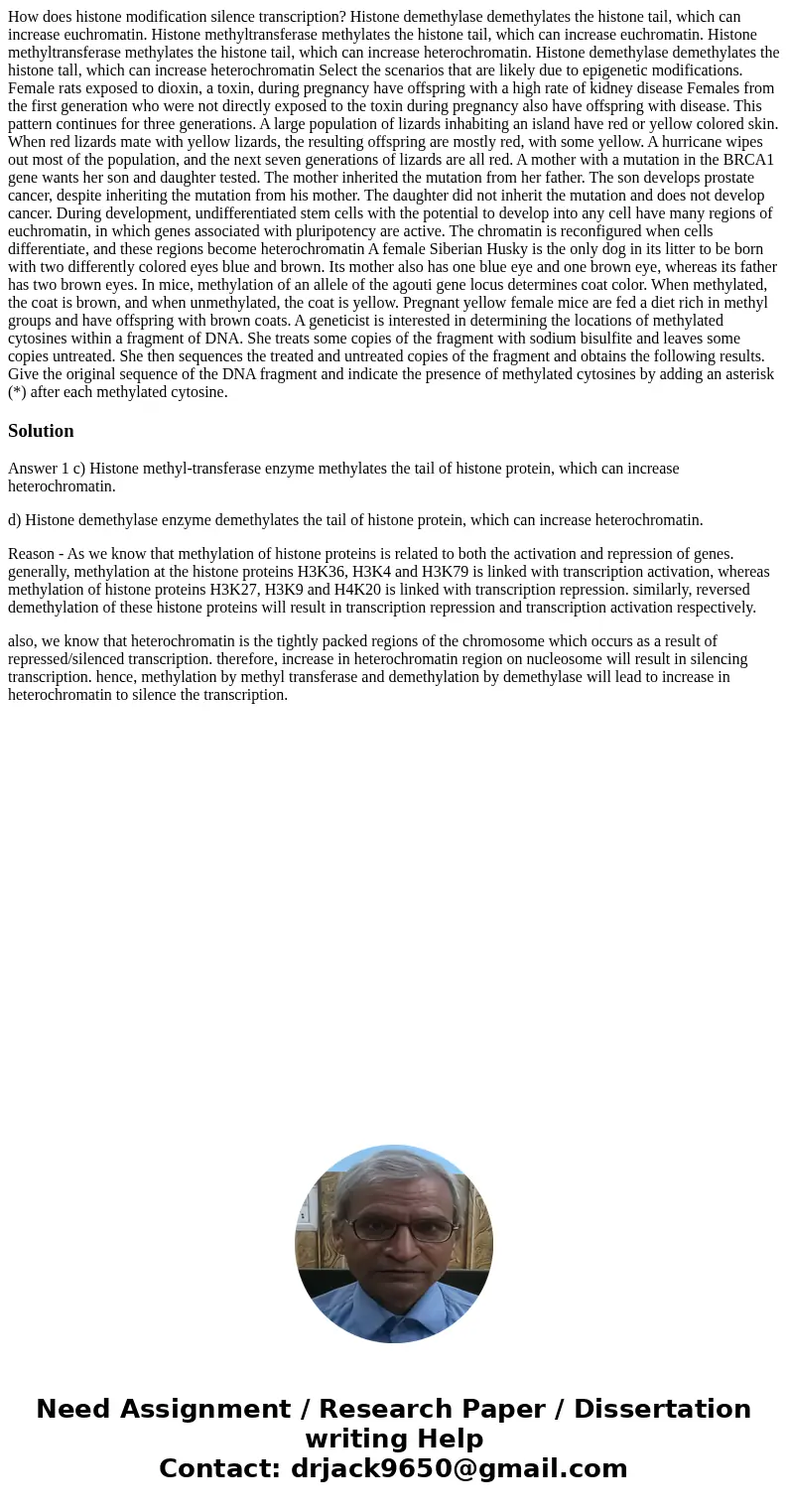How does histone modification silence transcription? Histone demethylase demethylates the histone tail, which can increase euchromatin. Histone methyltransferase methylates the histone tail, which can increase euchromatin. Histone methyltransferase methylates the histone tail, which can increase heterochromatin. Histone demethylase demethylates the histone tall, which can increase heterochromatin Select the scenarios that are likely due to epigenetic modifications. Female rats exposed to dioxin, a toxin, during pregnancy have offspring with a high rate of kidney disease Females from the first generation who were not directly exposed to the toxin during pregnancy also have offspring with disease. This pattern continues for three generations. A large population of lizards inhabiting an island have red or yellow colored skin. When red lizards mate with yellow lizards, the resulting offspring are mostly red, with some yellow. A hurricane wipes out most of the population, and the next seven generations of lizards are all red. A mother with a mutation in the BRCA1 gene wants her son and daughter tested. The mother inherited the mutation from her father. The son develops prostate cancer, despite inheriting the mutation from his mother. The daughter did not inherit the mutation and does not develop cancer. During development, undifferentiated stem cells with the potential to develop into any cell have many regions of euchromatin, in which genes associated with pluripotency are active. The chromatin is reconfigured when cells differentiate, and these regions become heterochromatin A female Siberian Husky is the only dog in its litter to be born with two differently colored eyes blue and brown. Its mother also has one blue eye and one brown eye, whereas its father has two brown eyes. In mice, methylation of an allele of the agouti gene locus determines coat color. When methylated, the coat is brown, and when unmethylated, the coat is yellow. Pregnant yellow female mice are fed a diet rich in methyl groups and have offspring with brown coats. A geneticist is interested in determining the locations of methylated cytosines within a fragment of DNA. She treats some copies of the fragment with sodium bisulfite and leaves some copies untreated. She then sequences the treated and untreated copies of the fragment and obtains the following results. Give the original sequence of the DNA fragment and indicate the presence of methylated cytosines by adding an asterisk (*) after each methylated cytosine.
Answer 1 c) Histone methyl-transferase enzyme methylates the tail of histone protein, which can increase heterochromatin.
d) Histone demethylase enzyme demethylates the tail of histone protein, which can increase heterochromatin.
Reason - As we know that methylation of histone proteins is related to both the activation and repression of genes. generally, methylation at the histone proteins H3K36, H3K4 and H3K79 is linked with transcription activation, whereas methylation of histone proteins H3K27, H3K9 and H4K20 is linked with transcription repression. similarly, reversed demethylation of these histone proteins will result in transcription repression and transcription activation respectively.
also, we know that heterochromatin is the tightly packed regions of the chromosome which occurs as a result of repressed/silenced transcription. therefore, increase in heterochromatin region on nucleosome will result in silencing transcription. hence, methylation by methyl transferase and demethylation by demethylase will lead to increase in heterochromatin to silence the transcription.

 Homework Sourse
Homework Sourse